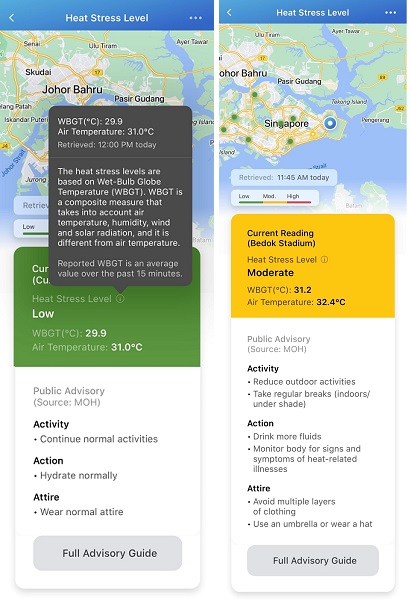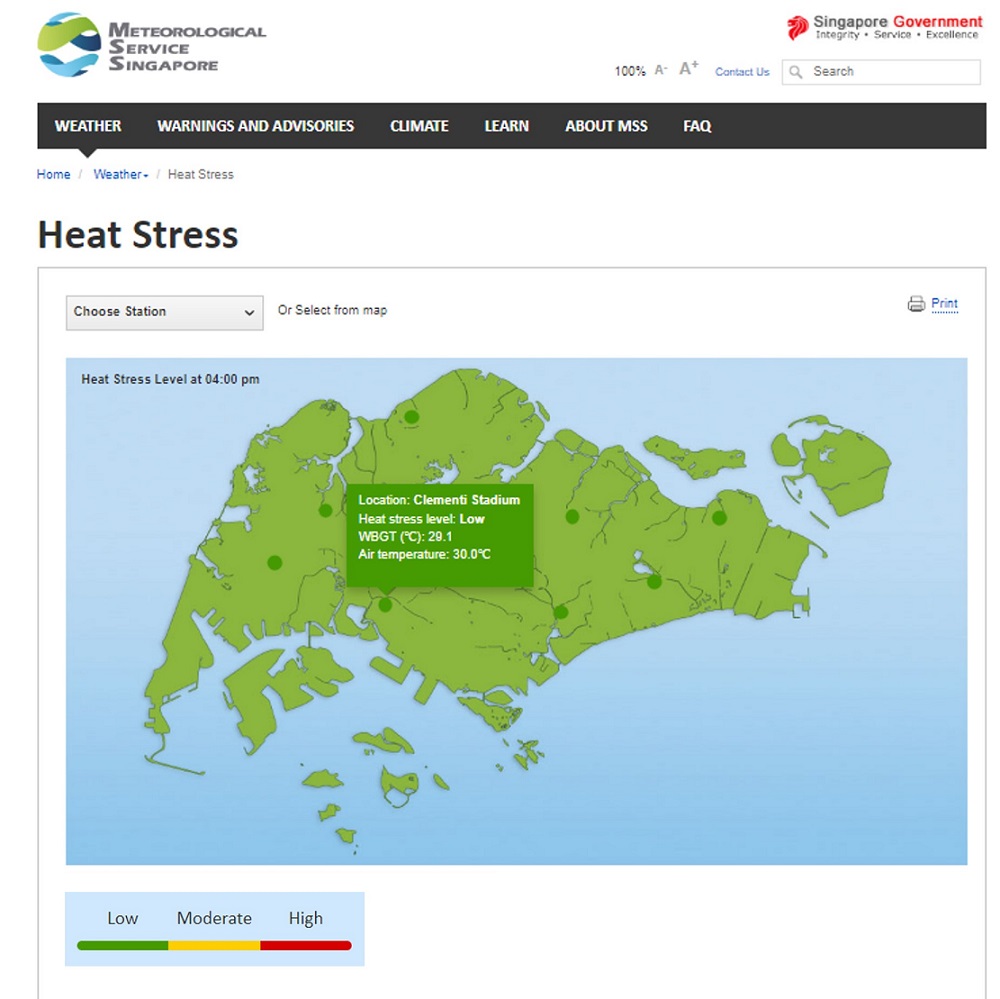Last Updated on 2023-07-31 , 8:45 am
Are you planning a trip to the beach?
You might want to check out Singapore’s new heat stress advisory before you head out.
New Heat Stress Advisory Launched So You Know You’re Not the Only One Feeling the Heat
Instead of merely checking the weather forecast, you can now check the new national heat stress advisory to find out how hot the weather will be.
Hopefully, not too hot to handle.
The national heat stress advisory was launched by the National Environment Agency (NEA) and the Ministry of Sustainability and the Environment (MSE) in consultation with the Ministry of Health (MOH) heat stress guidelines expert panel.
Macam assembling Avengers.
The advisory was launched to encourage Singaporeans to be more concerned about the heat and how it may affect their health.
Well, they’re off to a good start—the stream of complaints from Singaporeans about the hot weather already seems endless.
You can find the heat stress advisory on the myENV app or the Meteorological Service Singapore (MSS) website, both of which will be updated every 15 minutes.


So, how hot is “too hot” for a day out in the sun?
The heat stress advisory splits heat stress into three levels—low, moderate and high. And to make it easy for Singaporeans to grasp, the advisory assigns traffic light colours to each level.
Green for low, amber for moderate and red for high.
So if the heat stress level for the day is green, you should probably take the opportunity to touch some grass lah.
How the Heat Stress Level is Gauged
The heat stress level is gauged by readings from Wet-Bulb Globe Temperature (WBGT) stations near your location.
WBGT simi? Can eat one?
Advertisements
Don’t suaku lah. There are nine WBGT stations, primarily spread across stadiums in Singapore, which take readings that indicate how hot your body may feel in the current temperature.
As you may already know, when your body feels hot, it isn’t merely a result of the temperature. Other factors, such as humidity, also play a role; for instance, higher humidity makes it harder for your sweat to evaporate, making it harder for your body to cool down.
The WBGT readings consider all of these factors—air temperature, humidity, wind speed and solar radiation. You can trust that the heat stress levels derived from the readings will be accurate.
So if the heat stress levels say the weather’s hot, you can be sure you’re not the only one who feels the weather’s hot.
Warmer Weather is Expected for the Rest of the Year
You may be thinking: “Need heat stress advisory for what? I step outside I already know how hot it is.”
Advertisements
Well, you might not be ready for how hot the rest of the year will get and the actual danger of heat stress.
The weather phenomenon El Nino, which broke global temperature records when it last happened in 2016, is expected to return in the second half of 2023. This means Singaporeans can “look forward” to warmer and drier weather.
And possibly another temperature record smashed.
Even with El Nino aside, we’re sure most Singaporeans already notice the weather in Singapore getting increasingly hot. Singapore was essentially neighbours with the sun in April and May, recording air temperatures of up to 37°C in May.
For context, the last time such temperatures were seen was in April 1983.
“The warmer months of April and May typically see high heat stress observed for about half the days in these months, with the period of high heat stress lasting for up to 1.5 hours,” the MSS spokesman added.
Advertisements
Not sure which hours to avoid when it comes to the heat? According to MSS, high heat stress usually occurs between 11 am and 3 pm.
So maybe avoid making plans for those hours. You probably can’t wake up before noon anyway.
“We are like frogs being boiled slowly, not knowing we are being cooked. With this advisory, we want to first create awareness that the level of heat stress we are experiencing can be damaging in extreme cases,” Prof Lee from MOH’s heat stress guidelines expert panel added.
Essentially, heat stress is more severe than you think—check the advisory and be aware of the time you spend in the sun if heat stress is high.
How to Minimise Risk of Heat Injury
If you’re kiasu, here are some things you should note to avoid experiencing the headaches and nausea associated with heat injuries.
Advertisements
Heat stress, indicated by the heat stress advisory, isn’t the only factor affecting how hot you feel. Other factors include your attire, the activity you’re engaging in, and other risk factors.
Of course, if heat stress is high and you’re dressing like winter in Singapore, your body will feel hot. Add a marathon on top of that, and your body will probably feel so hot that you might get hospitalised.
The lesson? If heat stress is high, don’t wear multiple layers of clothing and don’t go out to run a marathon lah—mai geh kiang.
Risk factors that you should look out for to minimise your risk of heat injury include pre-existing illnesses and dehydration.
Pre-existing illnesses reduce your immunity, which could make it more difficult for your body to cope with moderate to high heat stress.
And we all know what dehydration in the heat can do to someone; we’ve all watched Ah Boys to Men.
The young and the elderly are also more prone to heat injury, so if people around you fall into these categories, do keep a lookout for them.
Read Also:
- You Can Soon See “Northern Lights” in Gardens by the Bay & It’s Free
- Everything About the Eta Aquarids Meteor Shower That’ll Be in S’pore Sky in May
- S’porean Killed in Spain Had Bought Insurance Policy from Suspect
- Everything About the 15YO Who Lived in a Circuit Road Market Stall
- Walk-Ins for Some Traffic-Related Service in TP Be Discontinued & People Have Book Appointments Instead
- Certain Parts of Telok Blangah Hill Park to be Closed for 2 Years After Slope Failure
Advertisements

